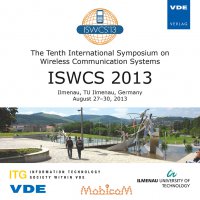Performance Comparison of Hierarchical Modulation Receiver Concepts for Different Service Classes
Konferenz: ISWCS 2013 - The Tenth International Symposium on Wireless Communication Systems
27.08.2013 - 30.08.2013 in Ilmenau, Deutschland
Tagungsband: ISWCS 2013
Seiten: 5Sprache: EnglischTyp: PDF
Persönliche VDE-Mitglieder erhalten auf diesen Artikel 10% Rabatt
Autoren:
Dehm, Mathias; Helmle, Sebastian (Rohde & Schwarz GmbH & Co. KG, Stuttgart, Germany )
Hohmann, Fabian; Körner, Christian (Rohde & Schwarz GmbH & Co. KG, Stuttgart, Germany)
Kuhn, Michael (University of Applied Sciences Darmstadt, Darmstadt, Germany)
Pesch, Dirk (Cork Institute of Technology, Cork, Ireland)
Inhalt:
A narrowband transmission chain using conven- tional quadrature amplitude modulation (QAM) and soft- decoding is extended to implement hierarchical modulation. Packet error rate (PER) for different receiver concepts and mod- ulation schemes is investigated using a multipath channel model. Two different data service classes are considered, a high priority (HP) voice stream and a low priority (LP) data stream striving for maximum throughput. Furthermore, the paper describes how hierarchical modulation is adjusted adaptively according to the channel conditions to increase the performance, i.e. the amount of successfully received data, in contrast to 4- and 16-QAM. The novel results show that hierarchical modulation achieves superior performance especially in the lower ES/N0 regions.


